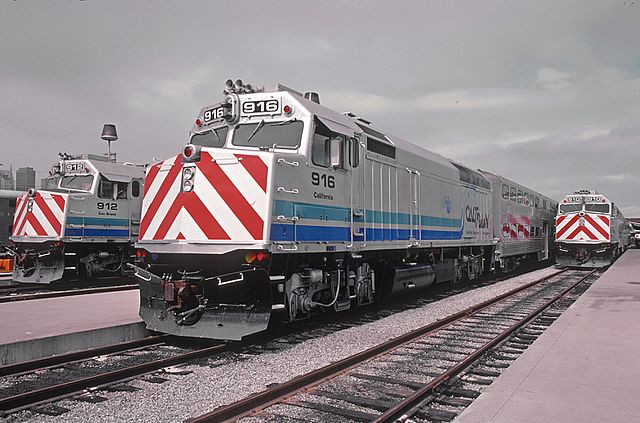San Francisco, the “City by the Bay,” is the public transit epicenter of California. S.F. is in a category all its own, truly exemplary where Golden State-based public transit is concerned. It is also headquarters for corporate car- or ride-sharing giants Uber and Lyft.
S.F. public transit runs the gamut. There is everything from BART (the Bay Area Rapid Transit District-run heavy rail passenger service) and SF Muni (the San Francisco Municipal Transportation Agency – providing both bus and rail passenger service) to Caltrain (the commuter train operator on the San Francisco peninsula and beyond) and corporation-deployed shuttle services as an effective way of transporting respective employees of participating corporations to and from work each day.
As it relates to BART, meanwhile, it was in “They Did It, Why Won’t We? Think Of All The Moolah We Could Save!” an opinion piece on the California Progress Report that I, in fact, once offered: “Because the Bay Area and San Francisco in particular were locales where transit systems – its cable car and streetcar lines – never met the scapper’s torch, building the Bay Area Rapid Transit system was practically a given.”
Understanding this characteristic of public transit dominance in America’s most populated state (now 39.4 million people strong), it should not come as a surprise then when I tell you that this world-renowned city will have its transit-bus network completely electrified by 2035.
This news is just great, not only for San Francisco bus and transit riders and air quality in and around the Bay Area, but also for folks living in the San Joaquin Valley considering that up to 27 percent of the northern San Joaquin Valley’s air pollution originated in the Bay and Sacramento areas and makes its way to the Valley via breezes blowing in from the north and northwest.
This monumental shift in policy and practice has even caught the attention of the likes of Earthjustice, so much so, apparently, that the environmental justice organization put out a press release announcing the upcoming change.
In “San Francisco Commits to Building a Fully Electric Bus Fleet by 2035: The SF Muni’s second commitment to zero-emissions buses will bring San Francisco up to speed with Los Angeles and Stockton,” Earthjustice wrote: “On May 15, 2018, the San Francisco Municipal Transportation Agency (SF Muni) Board of Directors passed a resolution to begin procuring zero emission battery buses to replace electric hybrid vehicles by 2025, with a goal of achieving a 100 percent electric bus fleet by 2035. The resolution allows SF Muni to catch up to other Californian transit agencies from Los Angeles to Stockton that have already started switching their bus fleets to zero-emissions electric buses.
“The resolution comes after a coalition of community, environmental and labor groups delivered a joint letter to SF Muni decision-makers last month, urging them to go electric.”
SF Muni joins seven other transit agencies in California that “have already committed to making a full transition to zero-emission buses in the past year,” Earthjustice related. “Back in its 2004 ‘Clean Air Plan – Zero Emissions 2020,’ SF Muni itself boldly announced its visionary goal ‘to be the first major transit agency in the world to operate a 100 percent zero-emission fleet by the year 2020.’ The resolution passed today by SF Muni finally sets that plan in motion, prompting the agency to begin procurement of electric buses.”
According to Earthjustice, these buses, which are exclusively electrically (battery) powered, are projected to enter active San Francisco service beginning this fall.
“The resolution also comes as CARB [the California Environmental Protection Agency Air Resources Board] is developing strategies to transition all Californian transit agencies to zero-emissions vehicles to meet air quality, climate and public health protection goals. The long-term vision of CARB’s Innovation Clean Transit (ICT) effort is to achieve a zero-emission transit system across California by 2040 – five years after SF Muni’s 100 percent electrification goal.”
Totally electric! Totally!
Notes
It was originally stated that in the San Joaquin Valley “up to 27 percent of Bay Area-derived air pollution leaves the Bay Area and makes its way to the Valley by way of breezes blowing in from the northwest.” This revised version now has the corrected text.
Image above: Roger Puta
This post was last revised on May 29, 2020 @ 6:58 a.m. Pacific Daylight Time.
– Alan Kandel

The greater use of electrified transport may save polluting the local atmosphere of the Bay Area but the extra electricity still needs to be generated. Perhaps by the stated year of 2035, it can all be made without using fossil fuels? If not somebody else’s air will suffer!